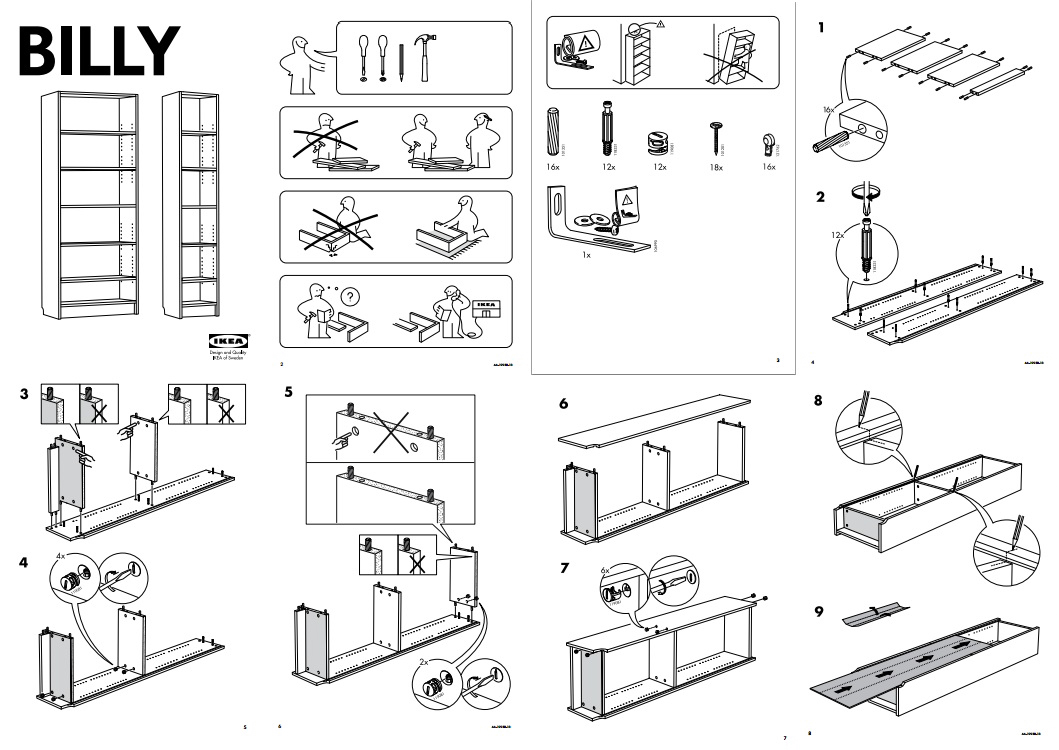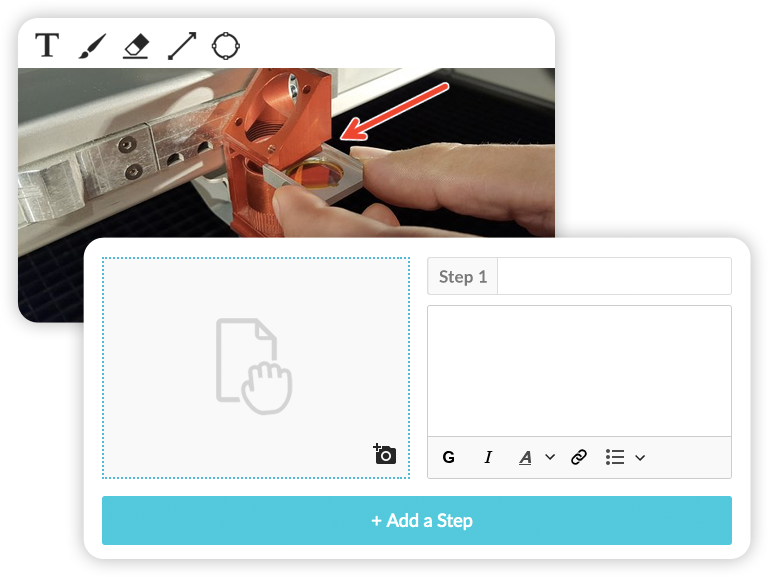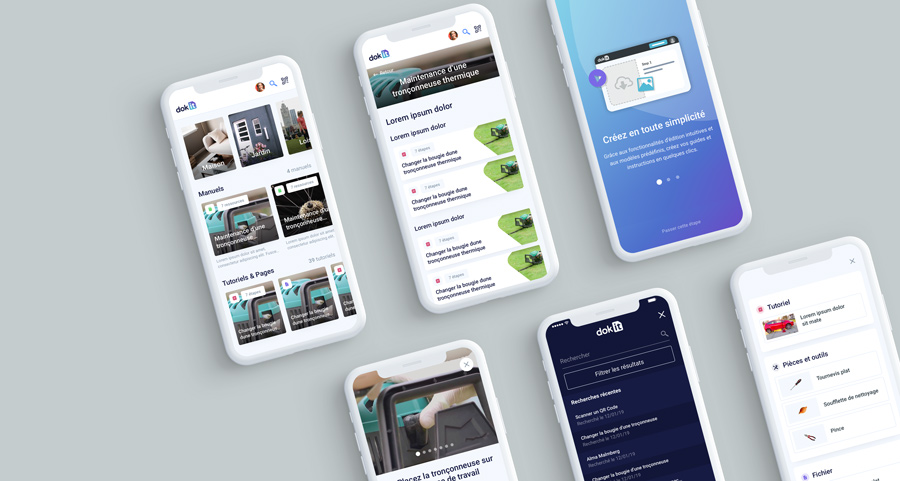Have you ever looked for an instructions manual for a product? Right now, I bet you’re thinking of that one time you bought that IKEA Billy bookcase, felt confident you could assemble it on your own by following the ‘easy’ steps on the step-by-step instructions and ended up typing in the YouTube search bar “How to assemble my IKEA bookcase?”. We’ve all been there!
You must’ve also come across old black and white manuals with obsolete diagrams, step-by-step instructions guide with a few pictures here and there…Nowadays, that’s about all the help you can get if you’re stuck with a few screws after perfectly – or so you thought – assembling your IKEA Billy bookcase.

IKEA Billy’s step-by-step instructions (source: idea.com)
Videos can be a go-to tool when looking for instructions online. They’re obviously highly visual and they summarize large amounts of information in a shorter amount of time. This might make them a great digital tool…but not the only one and most importantly, not the right one for all purposes. Clément Flipo, co-founder of Dokit, explained to us why using videos must be thought of beforehand and what the best format to create great instructions manuals is.
Hey Clément, thank you for agreeing to have a chat. Would you mind telling us a bit about yourself and what you do at Dokit?
My pleasure! I co-founded Dokit as I noticed there was a lack of simple and ergonomic tools to promote knowledge-sharing, and more specifically technical knowledge, within companies or with partners and customers. Dokit started out as a wiki then extended its use to offer our users the ability to create guides and visual instructions manuals. Knowledge sharing is definitely crucial within a company yet it’s too often overlooked by managers. And on the other hand, when you’re a business, communicating the right information about your products at the right time and to the right customers is also essential.
Online training seems to me like a no-brainer to efficiently and quickly spread knowledge. Employees are provided a way to assimilate key information in small bits, they’re more likely to remember it as they can go over the content as often as needed, their engagement and motivation is increased as a result…That’s why I founded Dokit, to offer companies the best way to create and share the digital documentation they’re (almost) all lacking within their organization.
Sounds like every single manufacturing and industrial company should use Dokit and desperately needs it! One of its promise is to create unique user guides, manuals and work instructions. What is it that makes them so unique and how do you deliver this promise?
I don’t know if every manufacturers and engineering companies needs us, but a lot could use our help, that’s for sure! With Dokit, my team and I wanted to make the creation of instructions as easy and visual as possible. By ‘easy’, I mean that it will only take you a few clicks to create a guide, and and that’s also a promise! We manage to keep this promise by adding to our platform intuitive editing features and predefined templates. But what really makes the guides you create on Dokit unique is that they’re highly visual – one look at your screen and you truly grasp a concept, step or idea.

Dokit’s user guide creation form
What if I told you I wanted a quick, visual and easy way to understand instructions. Would you advise to watch an instructions video?
That wouldn’t be my first advice, no. Videos allow for a global vision so you understand a concept broadly speaking. Let’s say you want a general idea of how to put together an IKEA kitchen. Sure, I’ll tell you: “Go check out a video on YouTube, fast forward it, you’ll understand the context and see how it goes”. But when you start to have many different steps that you need to understand, videos simply don’t do the trick.
You need to be able to go at your own pace, go back and forth between the steps you missed or need more time focusing on. You don’t want to get rushed from one step of the tutorial to the next and reach the end of the video without having understood a thing. I don’t blame you for thinking of instructional videos in the first place. Videos can, of course, be useful. But they will always need to be backed up with a document, you can’t rely on a single video to teach you and make you understand a concept. I guess what I’m trying to say is that videos and proper documentation go hand in hand but a video alone is not enough.
Then what does a step-by-step guide have that a video doesn’t?
You just said it in your question! It’s all about these steps. They’re what make online user guide easily understandable and user-friendly, they’ll get you to truly understand a process, a manual, a guide… As I briefly mentioned, videos don’t provide as much flexibility. For instance, you can’t translate or caption them in different languages as easily as you would with digital instructions. Not to mention that all these things can quickly get expensive and time-consuming!
On the other hand, with a well-illustrated and clear steps, you can grasp a concept in seconds. Pictures make the whole process of digital documentation creation way easier; they’re easy to take, to update and to edit (even on a smartphone). They’re also the basis to quickly draft up the instructions for a manual guide. And that makes a huge difference…Provided you write effective work instructions, of course!
So in the end, what’s the best format to create great digital instructions?
Online manuals, that’s my final answer! They’re definitely more accessible than any other tool in the sense that they democratize and spread knowledge. In addition to that, step-by-step guides are made accessible to all simply by being easy to create. If your average employee had to create his own instructional video, he would probably not be competent enough to script his own sequence. On the other hand, creating digital work instructions is logical; you take it one step at a time. And if you’re no longer satisfied with that work instruction or even just one step, you have the possibility to modify as many times as necessary. Good luck trying to create a new instructional video every time you’re not satisfied with the process you’ve created!

Dokit Mobile App to access step-by-step instructions and manuals
At Dokit, we’ve also come up with a way to make digital instructions even more accessible: by creating our own app. The Dokit app is set to be released in June 2019, with all our original features and many more to make the creation of user guides easier than ever.
Congratulations on that app, can’t wait to use it! Do you have other ideas or plans in mind for the future of Dokit?
Thank you very much. We’re really excited about the app and can’t wait for our users to discover it! Dokit was born out of a need my team and I had observed throughout our respective careers: instructions need to be easy to create but also to share. And we want to help our users as much as we can, every step of the way.
Our big project at the moment is obviously the launch of our app but we’re open to many more ideas in the years to come, as long as they imply simplifying documentation creation and sharing. Our ultimate goal is to provide instant access to all the information on our platform. We’ve already started thinking about adding a chatbot and even using AR (Augmented Reality) in the mix so who knows what the future holds?
Well there’s only one thing left for me to do: wish you good luck for all those exciting projects! And thank you for your time of course.

Clément Flipo, Dokit co-founder and Product Director
Categories
- Cas client (1)
- Enterprise Wiki (3)
- Guides and instructions (7)
- Industry 4.0 (7)
- Knowledge Management (4)
- Mobile App (1)
- Training (5)
- Uncategorized (1)
- Work instructions (7)
Recent Comments
